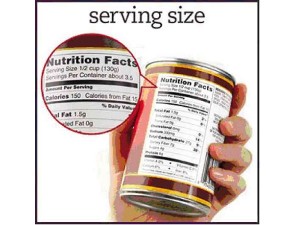Labeling for green building materials

NO STANDARD labeling system exists that will help people decide what building material to choose. Today, there is a growing clamor for transparency on the part of manufacturers to disclose ingredients of building products and associated health information. Photo from www.examiner.com
If you picked up a box of cereal or a canned good in the grocery, you will readily find in the label valuable data such as ingredients and nutrition facts. For many shoppers this information helps them make the right decision especially as it pertains to their health.
Unfortunately, this is not the case with many of the building materials that go into our homes and offices. No standard labeling system exists that will help people decide what material to choose. This leads many companies to intentionally deceive consumers through greenwashing.
Greenwashing
Greenwashing is the term given to any act of misleading the consumers about the environmental merits of a company, its products and services. Another definition of greenwashing is to promote a product or service as being good for Mother Nature without any basis in fact.
Today, there is a growing clamor for transparency on the part of manufacturers to disclose ingredients of building products and associated health information.
With the wide demand for green and sustainable buildings, there is also the demand for a standard format for ingredient disclosure. The public is becoming more careful with toxic ingredients in building materials and manufacturers have to work on a gradual removal of these harmful materials.
Making informed decisions
The idea behind the disclosure system is to allow designers, project owners and developers make more informed decisions about the products they purchase and their impacts on human health, and to reduce the burden on product manufacturers preparing various types of information requests and reporting formats.
• Building product info
—Waterborne preservatives are the more commonly used for treatment of wood. If chromate copper arsenate or CCA is used, the residuals, wastewater and drippings are said to be hazardous. Wood preservatives outgas for a very long time.
—Processed wood and wood waste products like particle board, chipboard and hardboard often use formaldehyde-based resins as binder or adhesive. Formaldehyde is said to be a probable carcinogenic. It could also be present in plastic laminates. Alternatives include ceramic tiles, linoleum, or native agricultural products.
—Synthetic-insulating materials that are manufactured through polymerization emit VOCs like formaldehyde. VOCs may be emitted from products, especially factory-packaged products, adhesives and finishes during the curing process. It is advisable to ventilate products for a few days before installation.
—Additives used to produce waterproof gypsum board and fire-resistant gypsum board may include VOCs. VOC emissions may be minimized in the final building when gypsum installation is properly sequenced and encapsulated.
—When using tiles, it is better to avoid mortars, grout and adhesives containing petroleum and plastic additive s. Water-based polyurethanes in wood floor finishes are preferred to solvent-based polyurethanes.
—Dioxins are carcinogenic byproducts of polyvinyl chloride manufacture. Vinyl flooring will outgas and when burned, will release hydrogen chloride, metal chlorides and dioxins. When vinyl flooring is incinerated, heavy metals remaining in the ash must be treated as hazardous waste.
—Linoleum is naturally antibacterial because of the continuous oxidation of the linseed oil. It is biodegradable and may be shredded and composted.
—Cork flooring is also anti bacterial. It also provides good soundproofing and insulation. It is biodegradable and recyclable.
—Synthetic carpet fiber, backing, pad, adhesive, seam sealants, carpet treatment and floor-preparation chemicals are all potential sources of VOCs in indoor air. Carpet can contain more than 100 chemicals, including possible carcinogens.
VOCs may be emitted from adhesives and from interaction of adhesive and carpet backing during the curing process. It is advisable to install with tack strips over pads to avoid adhesive interaction with carpet backing.
Fabrics, plastics and paper wall coverings have unique potential chemical content and emission characteristics. Vinyl wall coverings have PVC content.
—White zero-VOC paint has less VOC than colored paint. Fabric coverings act as sink for VOCs.
—Freestanding, partial height partitions or panels can interfere with the proper distribution of ventilation air. It is advisable to install panels according to plans prepared in harmony with the design of the HVAC system. Raising partition bottoms above the floor may improve airflow at workstations.
For comments or inquiries, e-mail amadodejesus@gmail.com.